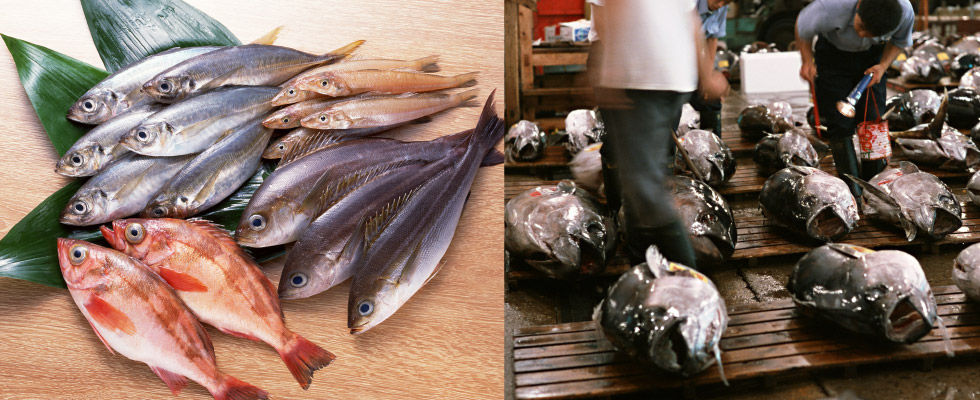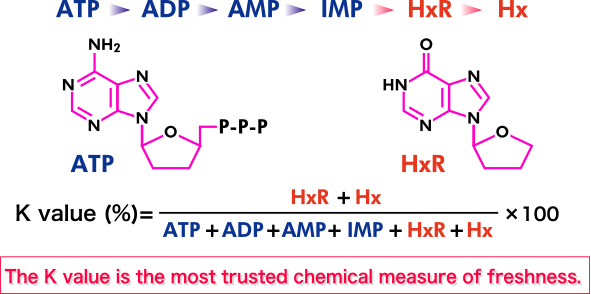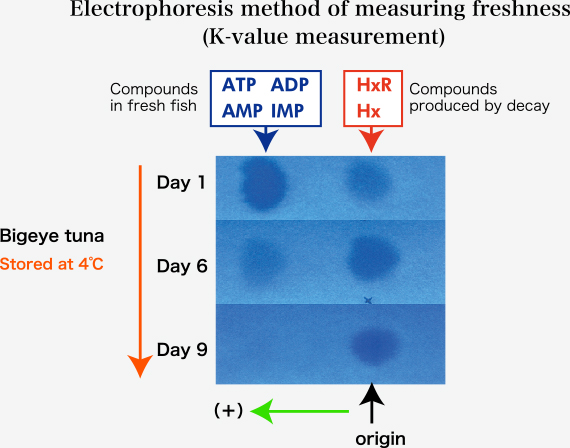Freshness


Freshness is basically a measure of the decline in taste since the death of the food organism. As time goes by, fish and meat deteriorate, their composition changes and the taste declines. Certain chemicals accumulate and can cause severe reactions such as food poisoning or allergy. Measuring the exact level of such chemicals provides a way to quantify freshness, and therefore the taste and safety of food.
Four different methods have been used
| Semsory assessment | External appearance (colour, clearness of the eyeballs, presence of scratches), hardness (rigor mortis), smell, body shape, and touch. |
|---|---|
| Chemical assessment | Quantity of histamine, ammonia, trimethylamine (TMA), nucleic acid related compounds (K value). |
| Physical assessment | Hardness (rigor index; RI), texture, torrymeter, impedance |
| Microbiological assessment | Total count of bacteria, count of spoilage bacteria, count of pathogenic bacteria |
When cells die, the nucleotide ATP (Adenosine triphosphate), is quickly destroyed by cellular enzymes. The resulting breakdown products can be measured as a K value. Knowing the K value provides a measure of how much deterioration has occurred since the animal's death, and therefore of the extent of food preservation.
[ATP, adenosine triphosphate; ADP, Adenosine diphosphate; AMP, Adenosine monophosphate; IMP, Inosine monophosphate HxR Inosine Hx, Hypoxanthine]

